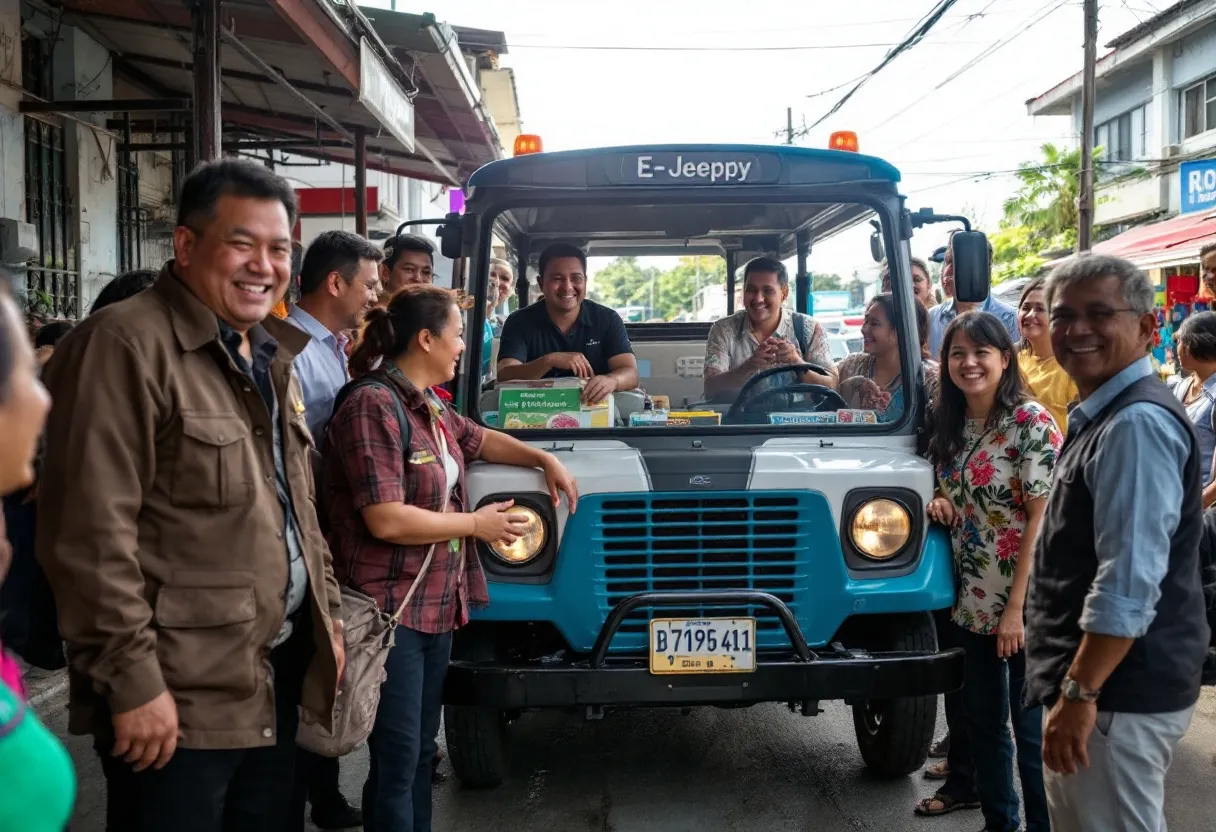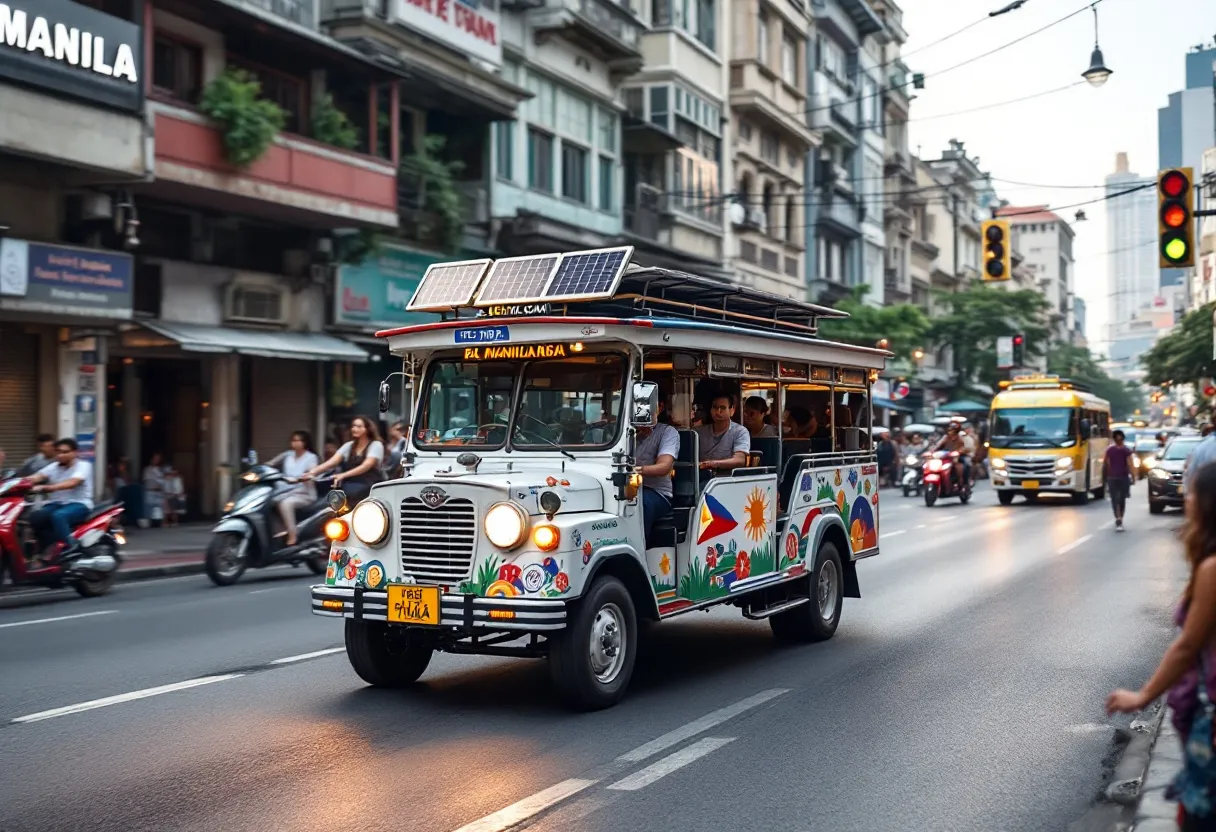Okay, let’s talk about jeepneys. I mean, you can’t really talk about the Philippines without mentioning these iconic vehicles! They’re more than just a mode of transport; they’re a symbol of Filipino ingenuity, resilience, and, let’s be honest, a whole lot of character. But… they’re also a bit of a problem when it comes to sustainability. So, how do we keep the jeepney spirit alive while making them, you know, not choke the planet? That’s the million-peso question we’re diving into today.
The Jeepney: A Love-Hate Relationship
Jeepneys are the kings (and queens!) of Philippine roads, right? They’re everywhere, ferrying millions of Filipinos daily. Seriously, they accommodate something like 40 million trips *every single day*. But here’s the rub: many of these jeepneys are old, outdated, and major contributors to air pollution. We’re talking about a significant chunk – 94% – of urban soot mass in Metro Manila alone! Yikes.

It’s a classic love-hate relationship. We love their convenience, their affordability, and their cultural significance. But we hate the smog, the noise, and the fact that they’re not exactly eco-friendly. So, what’s the solution? Modernization, baby! But it’s not as simple as it sounds.
The Modernization Push: A Bumpy Ride
The Philippine government launched the Public Utility Vehicle Modernization Program (PUVMP) back in 2017. The goal? To replace old, polluting jeepneys with newer, cleaner models, ideally electric jeepneys (e-jeepneys). Sounds great in theory, right? Zero tailpipe emissions! A breath of fresh air on wheels! And think about the reduction in air pollution, especially in cities.

But here’s where things get complicated. The transition to e-jeepneys isn’t exactly smooth sailing. There are challenges, big ones. Like, how do you convince jeepney drivers and owners – many of whom are struggling to make ends meet – to invest in expensive new vehicles? How do you build the necessary infrastructure, like charging stations, to support a fleet of e-jeepneys? And what about the cost of electricity? It all adds up, and it’s not cheap.
Challenges and Opportunities: A Balancing Act
Okay, so what are the main hurdles we need to clear to make this e-jeepney dream a reality?
- Cost: E-jeepneys are expensive, plain and simple. We need to find ways to make them more affordable, maybe through government subsidies, low-interest loans, or creative financing options.
- Infrastructure: Charging stations are crucial. We need to strategically place them throughout cities and provinces, ensuring that e-jeepneys can easily recharge. And ideally, these charging stations should be powered by renewable energy, like solar or wind.
- Electricity: Speaking of electricity, we need to make sure that the grid can handle the increased demand from e-jeepneys. And we need to transition to cleaner energy sources to power that grid. Otherwise, we’re just shifting the pollution from the tailpipe to the power plant.
- Driver Acceptance: Let’s be honest, some jeepney drivers are resistant to change. They’re used to their old jeepneys, and they’re worried about the cost and the learning curve associated with new technology. We need to educate them, involve them in the process, and show them the benefits of e-jeepneys.
But it’s not all doom and gloom! There are also some exciting opportunities on the horizon:
- Innovation in Design and Technology: We can get creative with jeepney design, incorporating solar panels, energy-efficient features, and even passenger amenities like Wi-Fi.
- Job Creation: The e-jeepney industry could create new jobs in manufacturing, maintenance, and charging station operation.
- Improved Air Quality: This is the big one! E-jeepneys can drastically reduce air pollution, improving public health and making our cities more livable.
- A More Sustainable Future: By transitioning to e-jeepneys, we can reduce our reliance on fossil fuels and contribute to a more sustainable transportation system.
The Role of Government and the Public
Okay, so how do we make all of this happen? It’s going to take a collaborative effort from the government, the private sector, and the public. The government needs to create policies that incentivize the adoption of e-jeepneys, like tax breaks or subsidies. They also need to invest in infrastructure and promote public awareness campaigns.
The private sector can play a role by developing affordable e-jeepneys, building charging stations, and providing financing options. And the public? We can support e-jeepney initiatives, advocate for sustainable transportation policies, and, of course, choose to ride e-jeepneys whenever possible.

I think that the jeepney modernization program in the Philippines is a complex issue with no easy answers. But with collaboration, innovation, and a little bit of that Filipino “can-do” spirit, we can transform these iconic vehicles into symbols of a greener, more sustainable future. Lets hope that things will be better.

